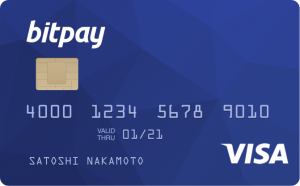With roughly fifteen days left bitcoin-based businesses all around the world have been preparing their users for the possible hardfork expected to take place on or around November 16. Now the world’s largest bitcoin merchant service provider, Bitpay, has revealed its contingency plans for the upcoming Segwit2x hard fork.
Also read: Trump to Appoint Bitcoin-Skeptic Powell as Fed Chair
Bitpay Will Follow the Chain With the Most Accumulated Difficulty
 The Atlanta-based company Bitpay has announced its plans for operations during and after the hard fork scheduled to occur at block height 494784. The firm says the company’s top priority is the safety and security of its users. With this in mind during some protocol upgrades, Bitpay says it “must take precautions to protect our users.” Bitpay details that while a good majority of miners and businesses support Segwit2x, it understands that not everyone is supporting a hard fork.
The Atlanta-based company Bitpay has announced its plans for operations during and after the hard fork scheduled to occur at block height 494784. The firm says the company’s top priority is the safety and security of its users. With this in mind during some protocol upgrades, Bitpay says it “must take precautions to protect our users.” Bitpay details that while a good majority of miners and businesses support Segwit2x, it understands that not everyone is supporting a hard fork.
“While most miners signaled their support of this protocol change, not all support it. If miners are divided over this change, there is a significant risk of a chain split,” explains Bitpay.
If that occurs, Bitpay’s services will follow the chain with the most accumulated difficulty.
A Suspension of Services for 24-hours or Longer

The company’s contingency plan applies to its merchant services, its Copay wallet software, and Bitpay Visa card users as well. Bitpay says they will continue to do their best to provide services using the Bitcoin blockchain. However, the company is telling its users not to utilize the Bitcoin network during block 494784 until everything is resolved. Unlike the Bitcoin Cash hard fork in August, this time Bitpay is stopping all operations for 24 hours and maybe longer.
“We will suspend payment acceptance, payment disbursement and debit card reloads approximately 24 hours prior to activation of Segwit2x — We are currently communicating with all of our affected users with preparation instructions.”
If you have a Bitcoin wallet and use Bitcoin during this period of uncertainty, you should assume that there will be a chain split and that any Bitcoin you send will be included in both chains. In addition, any Bitcoin you receive will be at a higher than normal risk of double spend.
Lastly, the company says if there is a prolonged or permanent chain split and the minority chain still has value, it will provide users with access to those specific tokens. As far as naming the chains, they will refer to the minority chain as BC1 if the Segwit2x chain receives the most accumulated proof of work. If the Segwit2x chain does not get the most proof-of-work, that specific chain will be called BC2, explains Bitpay. “Beyond that, we have no plans to offer our services on the minority chain,” Bitpay emphasizes.
Backlash for Supporting Segwit2x
Of course, those who are against Segwit2x did not appreciate Bitpay’s latest contingency announcement. In fact, many anti-Segwit2x supporters have been rallying against the company for a few weeks now. For instance, bitcoin developer Nicolas Dorier is creating a Bitpay compatible API for users who dislike the company’s decisions. Further, on October 26, Satoshi Lab’s (Trezor) CTO, Pavol Rusnak, told his Twitter followers the company cannot tolerate Bitpay.
“We’re replacing Bitpay exchange rates API in Trezor web wallet because they plan to play games with the BTC ticker — Can’t tolerate this,” explains Rusnak.
Bitpay doesn’t seem to be phased by the backlash for supporting Segwit2x and joins other large companies who’ve decided to follow the most accumulated hashrate. Other businesses following the same plan include Coinbase and Xapo.
What do you think about Bitpay’s decisions to support the most accumulated proof of work after the fork? Let us know what you think in the comments below.
Images via Shutterstock, Bitpay, and Visa.
At Bitcoin.com there’s a bunch of free helpful services. For instance, check out our Tools page!














